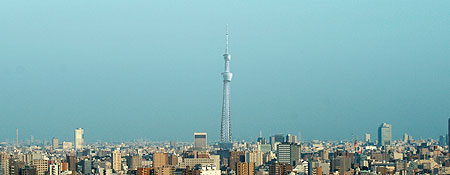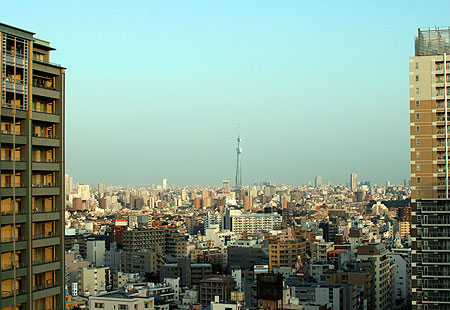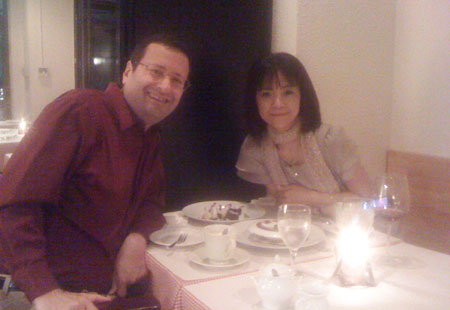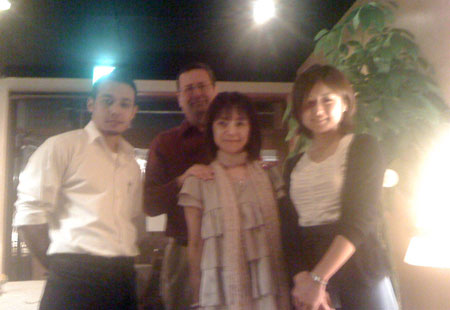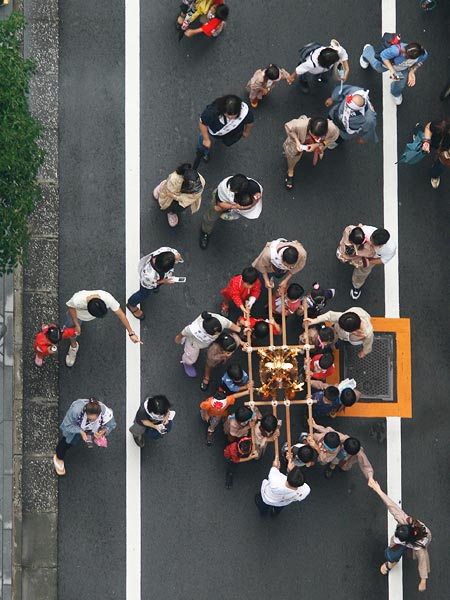Stuff you buy in Japan is more expensive than it is in the U.S. I know that’s old news, and what everyone expects, but it’s something which has both changed and stayed the same over the years.
People got the impression of Japan being expensive back in the 80’s, when Japan was flush. Back then, it was simply over-reported. You had all those stories about $50 musk melons: foreign journalists, wanting to show the greatest contrast possible, went to the priciest shops and found the most outstanding un-bargain they could find. As true as it was that Japan was more expensive, it wasn’t that much more expensive. Most people here didn’t go around buying $50 musk melons.
But things were expensive, and one reason was that people could afford it–and Japan had its own market pretty much tied up. I recall back in 1989, when I lived in Tachikawa, I saw something very new at a discount supermarket called “Topos”: Budweiser and Heineken beers went on sale at a price lower than native beers. After a week, the prices were back up. I asked the manager, and he was surprisingly frank: he told me that the domestic distributors had complained, and so he had to jack up prices of foreign beers again. There was a lot of that kind of thing in Japan at the time.
In the 90’s, however, things changed. The bubble burst, people became less able to spend so much money, and trade deals began knocking down more and more of the walls that had insulated Japan. 100-yen shops began popping up; I do not recall having seen these in Japan previously, but they caught on and today there are two or three in almost every city neighborhood. Prices have dropped, and a lot more foreign goods have made it into the Japanese market. Not nearly as many as you see in other countries, perhaps, but a lot more than there were in Japan twenty years ago.
But one thing has remained true: prices are higher in Japan than they are in the U.S., pretty much as a general rule. And that includes products made in Japan.
I became aware of this back in the early 80’s, when I first visited Japan. I was eager to buy a Nikon camera, and had priced them in the U.S. However, I held off buying one, as I expected they’d be cheaper in Japan. Not so: the same camera, made in Japan, cost more in Tokyo than it did Stateside.
And it is still true today. Price the Canon VIXIA HF200 HD video recorder, for example: at Amazon.com in the U.S., it’s $593. Same camera in Japan at Amazon.co.jp: $872. At Yodobashi Camera, a popular discount camera retailer, the equivalent model is $1,150.
People Stateside bemoan movie ticket prices that exceed $10. In Japan, the standard price at the door is $20. But if you are smart, you’ll buy an advanced ticket for the bargain price of $14.50, and if your budget is really tight, you’ll go to a first-day-of-the-month bargain show for just $11.10 (but those shows tend to be very crowded). Ironically, popcorn does cost less in the theater, but it’s a rare exception to the price rule–movie theater concessions in the U.S. are horrifically over-priced.
Another cost for movies which is higher in Japan: DVDs. The 2-Disc DVD for Star Trek (2009) in the U.S. is $23; in Japan, it’s $33. The fourth season of Bones costs $38.50 in the U.S.; in Japan, it’s $163–more than four times as much.
Why did this come up for me? Because I just bought airline tickets home for Christmas. Called the local travel agency, No. 1 Travel (which has eaten up most of its competitors in this town), and was told that my regular airline, United (frequent flier miles do kind of lock you in) did not have any open seats coming back to Japan for the whole last two weeks of December. And even if they did, the ticket price would be ¥75,000 ($833). But they didn’t, because they said that such a low price for tickets on United were a “special” fare and thus were very limited; I could only fly United if I paid more than a thousand dollars per ticket. So instead I asked them to hold for me the next best thing, tickets on Northwest, also priced at ¥75,000, thinking that I would not find a better price.
So then I went on Sidestep.com, a web site recommended by a co-worker, and typed in the same flight I had asked for. The cheapest fare came up: United, for $760–you could buy direct from their site. Hmm. No problem with the return flight, plenty of seats. I called up United in Japan, figuring that I could just buy from them here. They said, sure; again, no problem with seats on the return flight–but the price is ¥75,000. I told them about the price listed on the site, and they said that that was the U.S. dollar price, and they could not charge me that from within Japan. OK. So I went back online and bought the tickets with my U.S.-based credit card. For tickets for me and Sachi, I saved $146. I even saved myself a few trips to the local travel agency shop.
The DVD and airplane tickets are excellent examples of how the prices should be no different: neither represent much difference in actual production costs. The airline tickets should have been exactly the same.
Instead, it appears that people in Japan still pay a tax for being in Japan; the practice of over-pricing persists. Why is a different question. I’m no economist, so I can only guess. Japan has suffered from a bad economy for a long time, so affluence can’t be the reason. Taxes are a possibility, but if it were, then the over-pricing should be consistent. This is not so: some cameras cost only 10 or 20% more than the U.S. price, while some cost much, much more than American counterparts. Macs, for instance, are usually 10 ~ 20% more expensive here, on a consistent basis, while other electronic items, like video cameras, cost a great deal more. Because the over-pricing is neither universal nor consistent, it seems unlikely that taxes alone account for all of the differential.
If I had to guess, I would say that in some cases, the products are overpriced simply because they can be–the sellers simply believe that people here will pay a higher price. It may also be that the practice of subsidizing cheaper prices overseas by over-charging in Japan continues in some places.
If anyone out there has a clearer understanding of this, I’d love to hear about it.
As a side note, I remember when my airline ticket purchase would have been a no-go: back in the 80’s, you were required to buy airline tickets from within Japan, where they were more than just $70 more expensive at the time. The common end-run around that was a ticket called
yobiyose (Japanese for “to summon”), where you bought a ticket which went from, say, Hong Kong to Tokyo to S.F. and then back to Tokyo. Because the ticket started outside Japan, you could avoid the massive Japan tax, and you just discarded the first leg. That was, of course, frowned upon by the airlines. At some point the market relaxed and this is no longer a problem.
One more side note: I bought most of my DVDs from the U.S. because of the significant price difference, but now have a problem: Sachi is not as satisfied watching them without Japanese subtitles. Oops. And I have to have a region-free DVD player to watch them to boot.
Interestingly, Blu-ray regions are arranged so that U.S. and Japan are in the same region–but, of course, the Blu-rays sold in the U.S.
never have Japanese subtitles. Spanish, French, even Arabic are common, but never Japanese. Gee, I wonder why.



 And the thing I missed most: a built-in bidet. Many Japanese toilets have them, with electronic controls on the side. Push a button, and a retractable arm comes out and then washes your backside with warm water. I resisted using these for year, being wary of anything that did something like that, but Sachi got me using it–and I came to depend on it so much that I very much noticed the lack of this feature while in the U.S. Not only does it keep you cleaner, but it saves a considerable amount of toilet paper. Why this has not caught on more, I don’t know. But it’s fairly common in Japan, and has been in use for decades.
And the thing I missed most: a built-in bidet. Many Japanese toilets have them, with electronic controls on the side. Push a button, and a retractable arm comes out and then washes your backside with warm water. I resisted using these for year, being wary of anything that did something like that, but Sachi got me using it–and I came to depend on it so much that I very much noticed the lack of this feature while in the U.S. Not only does it keep you cleaner, but it saves a considerable amount of toilet paper. Why this has not caught on more, I don’t know. But it’s fairly common in Japan, and has been in use for decades.
 That said, one still finds, all too often, “Japanese style” toilets in public stalls–that is, the weird, old-fashioned, hooded trenches which require one to squat down. Disgusting for several reasons, which I will not go into here. Why these are still used is beyond me–people who hate sharing a seat, or a concession to older people, perhaps. However, you rarely find a public bathroom which does not give you an option–though often times, if there are both types, the Japanese-style stall will be the only one unoccupied.
That said, one still finds, all too often, “Japanese style” toilets in public stalls–that is, the weird, old-fashioned, hooded trenches which require one to squat down. Disgusting for several reasons, which I will not go into here. Why these are still used is beyond me–people who hate sharing a seat, or a concession to older people, perhaps. However, you rarely find a public bathroom which does not give you an option–though often times, if there are both types, the Japanese-style stall will be the only one unoccupied.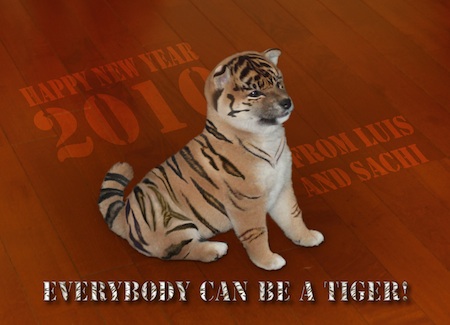




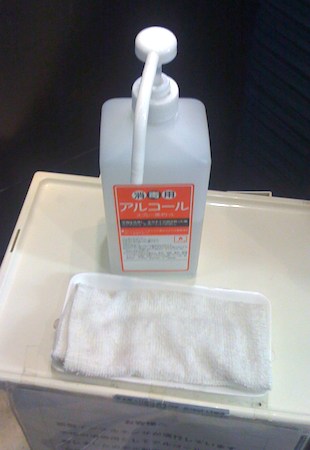
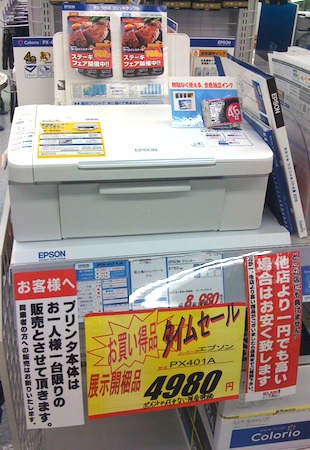








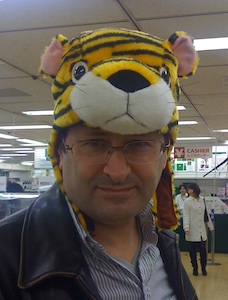
 Answer: CRC 5-56. Not that it’s a native Japanese product–I wasn’t able to figure out exactly where it originates from–but that’s the product name which Japanese recognize as much as Americans recognize WD-40 (which, by the way, stands for “Water Displacement – 40th Attempt”).
Answer: CRC 5-56. Not that it’s a native Japanese product–I wasn’t able to figure out exactly where it originates from–but that’s the product name which Japanese recognize as much as Americans recognize WD-40 (which, by the way, stands for “Water Displacement – 40th Attempt”). I found out about the product while looking for something else in the storage area at work, and stumbled across a can of this stuff. I thought it might be a WD-40 analog because of the little straw attached to the side, something recognizably unique to this kind of product. I asked a Japanese staff member, and sure enough, they confirmed that it’s a mechanical lubricant and cleaner, and yes, everyone recognizes the name.
I found out about the product while looking for something else in the storage area at work, and stumbled across a can of this stuff. I thought it might be a WD-40 analog because of the little straw attached to the side, something recognizably unique to this kind of product. I asked a Japanese staff member, and sure enough, they confirmed that it’s a mechanical lubricant and cleaner, and yes, everyone recognizes the name.
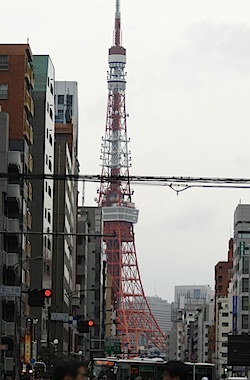 If you’ve ever been to Tokyo, or at least seen the movie Mothra, then you probably know about Tokyo Tower, a fixture in the city for the past fifty-one years. Built in 1958, at a height of 332.5 meters, it has been perhaps the city’s most famous landmark. Go almost anywhere in the southern half of the city, and it’ll probably be visible–a big, red-and-white tower in the heart of the city.
If you’ve ever been to Tokyo, or at least seen the movie Mothra, then you probably know about Tokyo Tower, a fixture in the city for the past fifty-one years. Built in 1958, at a height of 332.5 meters, it has been perhaps the city’s most famous landmark. Go almost anywhere in the southern half of the city, and it’ll probably be visible–a big, red-and-white tower in the heart of the city.


